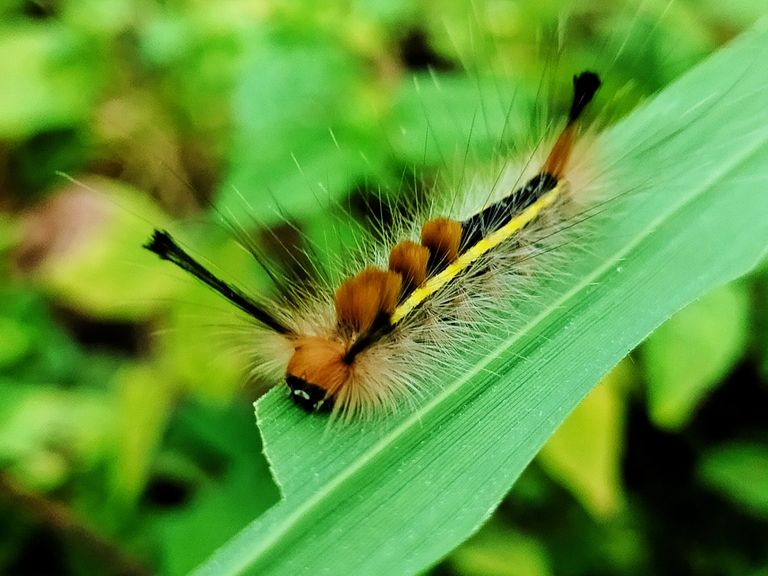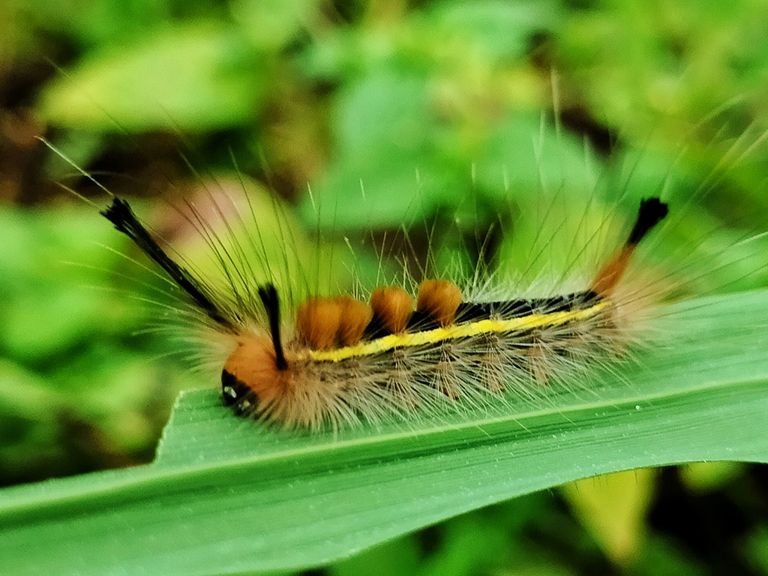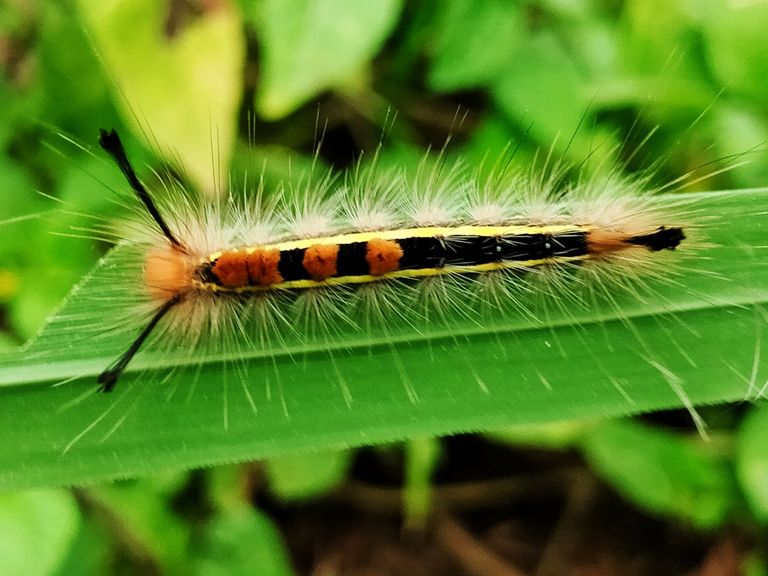
Orgyia leucostigma, also known as the white-marked tussock moth, is a species of moth in the Erebidae family. This species can be found throughout most of North America, from Canada to Mexico.
The white-marked tussock moth has a greyish-white coloration that contrasts with the broad black stripes and a prominent center stripe on the forewings. Adult female moths have smaller wings than males and have a thicker midline on the forewings.
The white-marked tussock moth is known for having larvae that grow tussock hairs. This tussock hair can cause allergic reactions in humans and animals if it comes into contact with the skin. These larvae are usually black in color and are provided with conspicuous pink and white stripes. They are usually seen in groups on the branches or leaves of the trees they eat.
Although the white-marked tussock moth is not considered a significant species in the ecosystem, their larvae can eat leaves and damage trees. Hence, they are sometimes considered as pests to crops.
While the white-marked tussock moth can be a pest to plants, they are also an important part of the ecosystem. As insects, they are food for several other animal species, such as birds and spiders. Apart from that, they can also help in pollination of plants.
Overall, the white-marked tussock moth is an interesting insect species that plays an important role in the ecosystem. However, as with many other species, the balance between benefits and harms depends on the context in which they are found.


